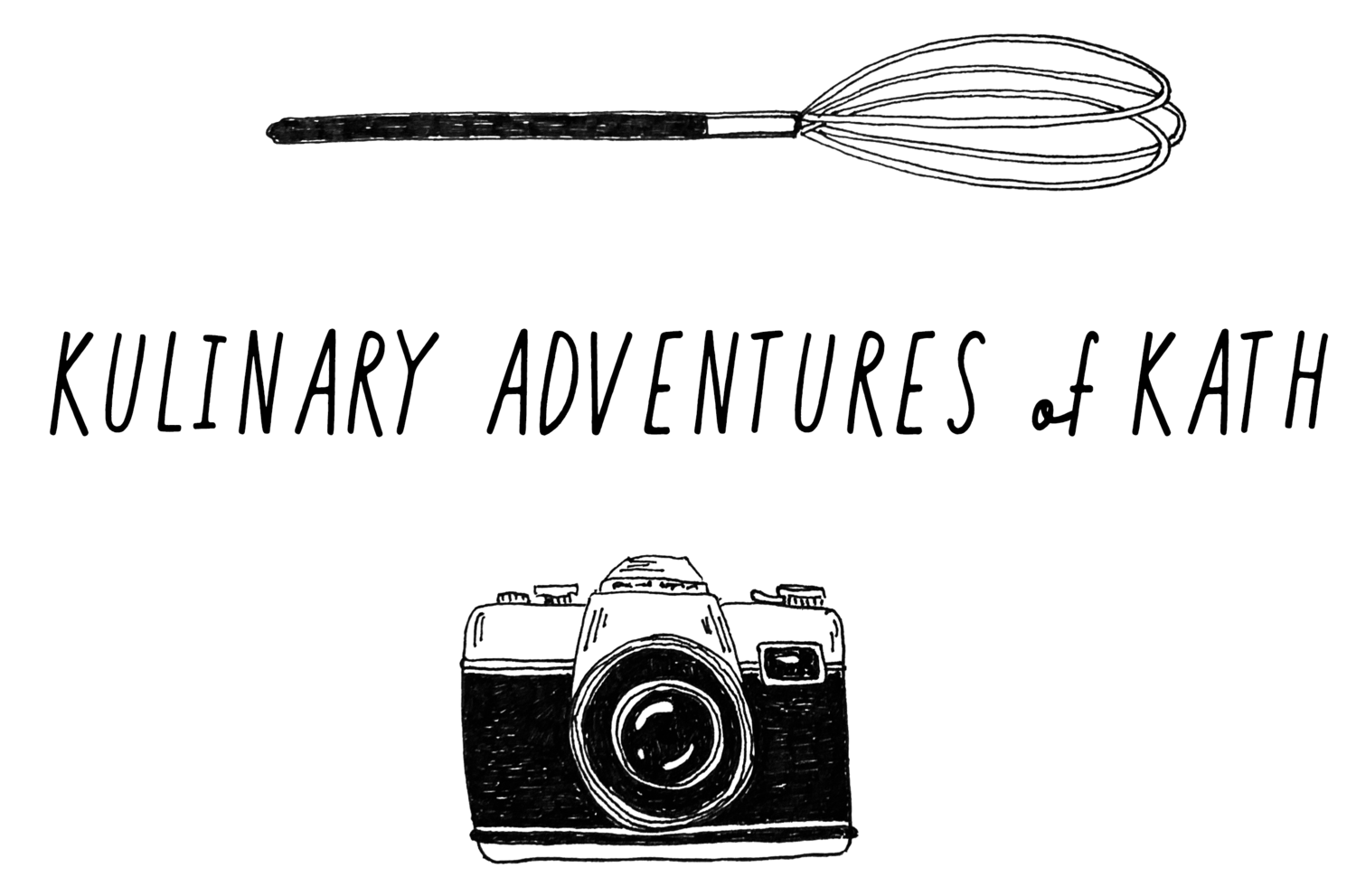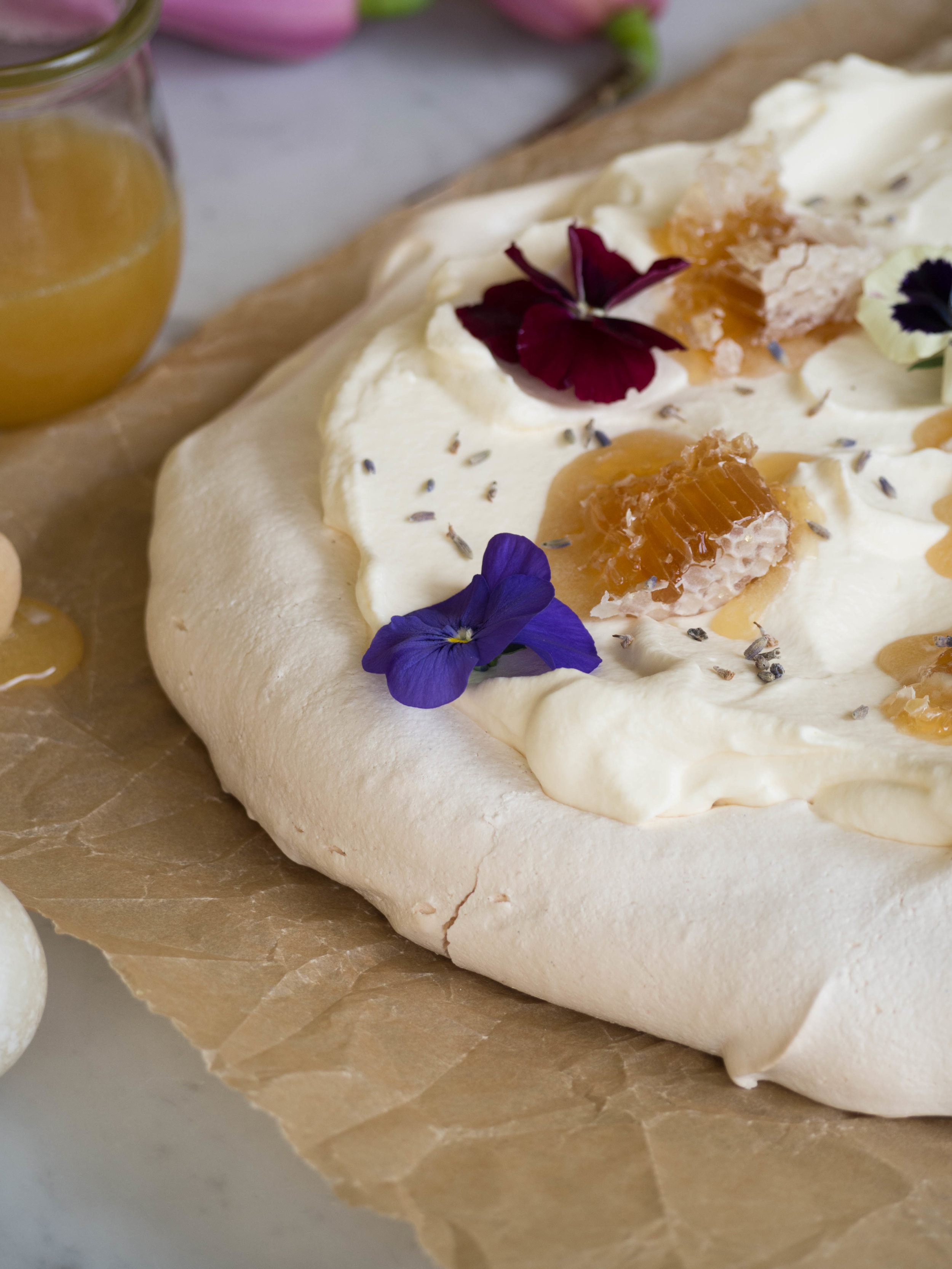As you may have noticed from the number of times I have posted a recipe for Pavlova on this blog, I love Pavlova! It was my favourite thing my Grandma made, and I seem to be unable to stop coming up with new adaptations to it.
After making a Duck Egg Sponge a little while ago, I knew that next time I was able to find duck eggs I would try and bake something different. So when I finally found them again, I decided to make a duck egg Pavlova! A quick Google told me that duck eggs make great Pavlovas so I was keen to try it out. The flavours for this Pavlova are inspired by the honeyed cream from the Duck Egg Sponge I made. Adding honey to whipped cream is just about the most simple thing to do, but it tastes so good! I also love fresh honeycomb, so I couldn’t resist using some to decorate the Pavlova.
I buy my honeycomb from a farm stand in the north western suburbs of Sydney, and it is super fresh, and not too expensive ($15 for 500g). Fresh honeycomb is the purest form of honey you can eat as it has not gone through any filtering processes. The comb of the honey is fine to eat, and actually contains many beneficial properties. The honey this particular farm stand sells is amazing as well, and is also raw so all the good things are left in the honey rather than being striped out.
I have found these types of honey’s have a more complex and interesting flavour than the honey sold at supermarkets, and buying it straight from the producer means you can buy it in larger quantities and at a better price than honey’s sold at gourmet food stores. Depending on where you live, you might even be able to find fresh duck eggs at farm stands or farmers markets, its always worth keeping an eye out!
Duck Egg Pavlova with Fresh Honeycomb
Ingredients:
6 duck egg whites
375g caster sugar
1.5 tsp white vinegar
1.5 tsp vanilla bean paste
30g cornflour
To decorate:
300ml pouring cream
90ml honey
fresh honeycomb
dried edible lavender
edible flowers, to decorate, optional
Method:
Pre-heat oven to 200 degrees Celsius. Line a large baking tray with baking paper.
Separate the duck eggs adding the whites to the bowl of a stand mixer. Duck egg shells are tougher than chicken eggs, and take a little more effort to crack, and I have found in the process the shells won’t crack ‘cleanly’. I suggest cracking each over a glass then separating the yolk and the whites over another glass or small bowl so you keep as many shell fragments contained and away from the pavlova mixture as possible!
Beat the egg whites for 5-6 minutes, whilst gradually adding the sugar. Add the vinegar and vanilla and beat until the mixture is stiff, glossy and holds its peak (for an example of what this looks like see this video on my Facebook page).
Sift cornflour over the mixture, and gently fold to combine.
Use a little of the mixture to help keep the baking paper in place. Spread the mixture into a rectangle, approximately 20 x 35 cm (this will depend on the size of your tray). If you want a pavlova with a more marshmallowy centre, make the rectangle smaller than 20 x 35 cm, so it will be thicker rather than wide. Try to keep the edges a little higher than the middle so any filling can sit comfortably later.
Turn the oven down to 125 degrees Celsius, and cook undisturbed for 1.5 hours.
After 1.5 hours, turn the oven off and leave the pavlova to cool completely in the oven (or overnight).
Just before you are ready to serve your pavlova, whip the cream until it has thickened and is forming soft peaks. Add the honey and whisk until combined. Spread the cream over the centre of the pavlova. Decorate with a small sprinkling of dried edible lavender, small chunks of fresh honeycomb and some edible flowers.
Note: If you are preparing the pavlova in advance of serving it, or know you will have left overs, I suggest serving the honeycomb on the side as the honey from the honeycomb will start to drip away when stored in the fridge.










